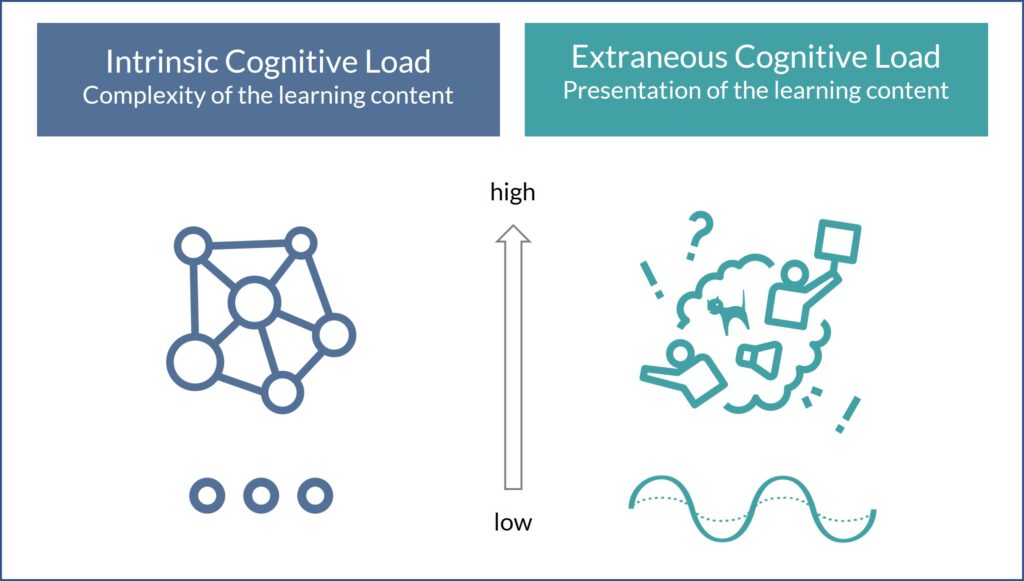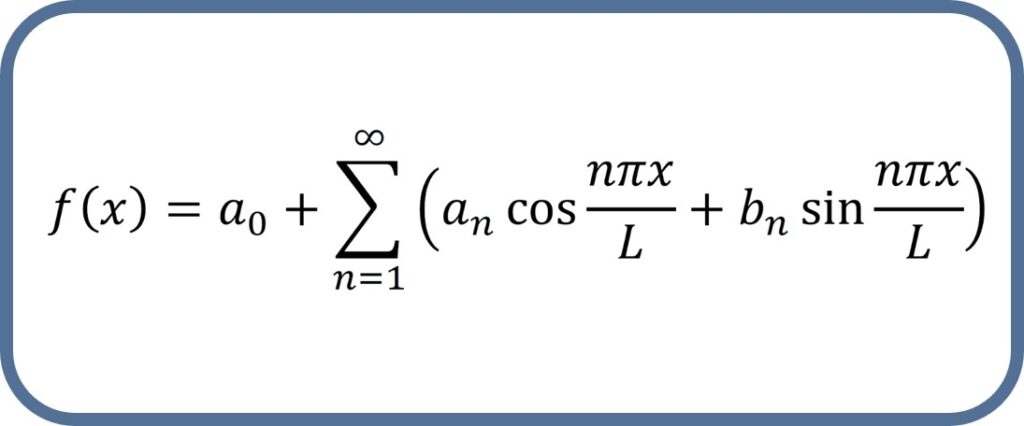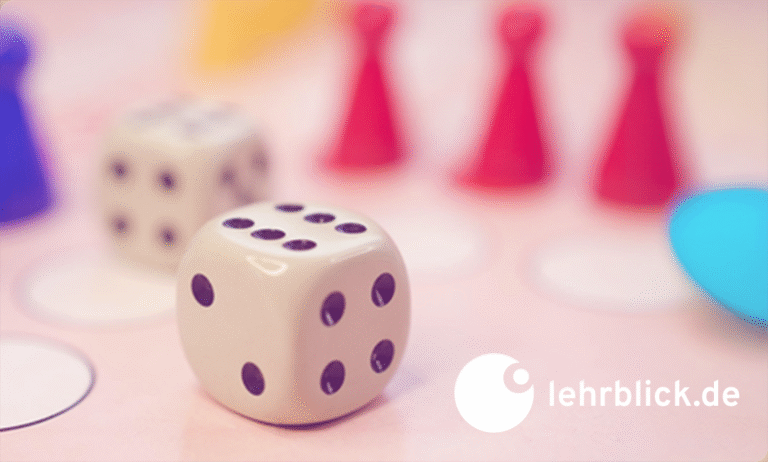Why is learning often so tiring? And why is it sometimes easier and sometimes harder? Cognitive Load Theoryexplains why learning can be a real challenge.
Learning is actually child’s play in the truest sense of the word. We don’t need to learn how to learn, because the learning process follows principles determined by evolution. Sweller, van Merriënboer and Paas (2019) describe five innate processes (biologically primary processes) by which we gain knowledge:
- the information store principle
- the randomness as genesis principle
- the environmental organising and linking principle
- the borrowing and reorganising principle
- the narrow limits of change principle.
These determine the way we store, generate and process knowledge.
Storing, generating and processing knowledge
Learning means changing the learner’s level of knowledge. The more extensive and better organised this knowledge is, the better we are able to solve tasks and problems. So that knowledge is available to us for the duration – or a lifetime if possible – we need an efficient store: long-term memory (information store principle). The storage capacity of long-term memory is immeasurably large. If there is any natural limit at all, we do not know what it is at least.

But how does this great amount of knowledge get into long-term memory?
On the one hand, as humans we are able to generate knowledge actively ourselves by trying to solve problems. We think about possible approaches to solving a problem and test them to see whether they are effective and plausible (the randomness as genesis principle). If these ideas are no good for solving the problem, we reject them again. But if this newly generated knowledge proves helpful in solving certain problems, we store it in our long-term memory. Later, in similar action situations, the retrieval of this knowledge is triggered by cues (the environmental organising and linking principle). We can therefore access the knowledge to solve related problems. This form of knowledge generation is important in a university context if there is no set knowledge available to find a solution to a problem (as yet) – as is the case with research. However, there are also various didactic approaches such as discovery or problem-based learning that apply this research-related approach to student’s acquiring of knowledge. What is problematic here is that these approaches are very time-intensive and often not very effective, as they can also promote the building of misconceptions (Kirschner, Sweller & Clark, 2006). Generally therefore, these approaches are not very constructive for students in lower semesters who have little previous knowledge.
Processing knowledge
We only generate a small percentage of our knowledge ourselves, however. We take on the majority of it from other people: we hear what others say, read what others have written or imitate what others do (the borrowing and reorganising principle). First of all we process this new information in our working memory, which serves as a kind of notepad when we do so. We can only perceive and process information consciously if it is in our working memory. Unfortunately, the working memory is a very small notepad. It has very limited capacity when it is a question of processing new information (the narrow limits of change principle).
Working memory as a bottleneck
Early studies by Miller (1956) suggest that we can retain around seven +/- two pieces of information in our working memory simultaneously. More recent findings reveal this number to be even lower. There is good evidence to show that we can generally process three to a maximum of five new information units in our working memory simultaneously (Cowan, 2010). If the information in our working memory seems important to us and appears to make sense, it is stored in existing structures in the long-term memory. Whatever is not stored is lost after around 20 seconds and is then no longer available. When learning, therefore, there is a very short time span remaining in which to process new information.
Cognitive Load
The mental effort involved also increases with the amount of information that has to be processed in the working memory. Cognitive Load Theory describes the causes and consequences of this cognitive load (Sweller, van Merriënboer & Paas, 1998; 2019). The greater the cognitive load, the more the learning is perceived as strenuous. Sweller, van Merriënboer and Paas (2019) distinguish different types of cognitive load 1:
(1) Intrinsic load arises as a result of the learning content
(2) Extraneous load arises as a result of the way information is presented.

Intrinsic Load
The degree of intrinsic load when learning depends on two factors: the complexity of the learning content and the learners’ previous knowledge.
The more elements that have to be processed when learning and the more strongly the individual elements are dependent on one another (element interactivity), the greater the load. One task which has less of a load, for example, is learning vocabulary off by heart. A word is an information unit and can be learned independently of other vocabulary (Figure 1a). Solving a mathematical equation with a large number of variables, for example, can be more difficult on the other hand. In this case, there are not only significantly more individual elements to take into account, but the individual elements are also more strongly dependent on one another (Figure 1b).


What is perceived as a single information unit here depends on the learners’ previous knowledge and is therefore difficult to determine objectively.
Imagine you are supposed to remember a 12-digit number combination, e.g. 0 3 1 0 1 9 9 0 2 4 1 2 . If you do not constantly repeat this combination in your memory, after a very short period of time you will no longer be able to recall it.
However, if you know that 03 10 1990 is German Unity Day and 24 12. is Christmas Eve, you can group the numbers into units of meaning. Based on your previous knowledge, you can bundle the 12 individual pieces of information into two bundles of information (chunking). That way, cognitive capacities are freed up to process more information (Thalmann, Souza & Oberauer, 2019).
This mechanism also explains why experts can process information from their domain significantly better than novices. Experts recognise semantically significant patterns, which they condense and label. These chunks can contain a multitude of individual pieces of information. The limit of the working memory is thus extended from around four information units to four chunks.As a teacher, you can only marginally influence the degree of your students’ intrinsic load. Sequencing tasks, adapting the subject matter to the students’ level or regular breaks can make learning easier even if the intrinsic load is high.
Extraneous Load
It is not only the complexity of the learning content itself that influences how great the load is on the working memory but also the way the learning content is presented.
A list of well-meant learning arrangements increase the extraneous load and thereby distract from learning: a large amount of information presented simultaneously, disruptions, unnecessary repetitions or awkward instructions will even hamper learning rather than facilitate it. As teachers can easily control the extraneous load – unlike the intrinsic load –, countless studies have looked into how extraneous load can be avoided or at least reduced. Several aspects have already been shown on lehrblick.de in the entries about slide design or learning from worked examples. The subject of the second part of this entry is further approaches to instructional design based on Cognitive Load Theory.
1In earlier studies (Sweller, van Merriënboer & Paas, 1998), germane load was also specified as a third category. This category has been dispensed with in more recent studies as it is not independent of intrinsic and extraneous load.
References
Cowan, N. (2010). The Magical Mystery Four: How Is Working Memory Capacity Limited, and Why? Current Directions in Psychological Science, 19(1), 51–57. https://doi.org/10.1177/0963721409359277
Kirschner, P. A., Sweller, J., & Clark, R. E. (2006). Why minimal guidance during instruction does not work: An analysis of the failure of constructivist, discovery, problem-based, experiential, and inquiry-based teaching. Educational Psychologist, 41(2), 75–86. https://doi.org/10.1207/s15326985ep4102_1
Miller, G. A. (1956). The magical number seven, plus or minus two: Some limits on our capacity for processing information. Psychological Review, 63(2), 81–97. https://doi.org/10.1037/h0043158
Sweller, J., van Merriënboer, J.J.G. & Paas, F.G.W.C. Cognitive Architecture and Instructional Design. Educational Psychology Review 10, 251–296 (1998). https://doi.org/10.1023/A:1022193728205
Sweller, J., van Merriënboer, J.J.G. & Paas, F. (2019). Cognitive Architecture and Instructional Design: 20 Years Later. Educational Psychology Review 31, 261–292 (2019). https://doi.org/10.1007/s10648-019-09465-5
Thalmann, M., Souza, A. S., & Oberauer, K. (2019). How does chunking help working memory? Journal of Experimental Psychology: Learning, Memory, and Cognition, 45(1), 37–55. https://doi.org/10.1037/xlm0000578
Suggestion for citation of this blog post
Hawelka, B. (2023, March 9). Cognitive load – Why learning is sometimes strenuous. Lehrblick – ZHW Uni Regensburg. https://doi.org/10.5283/ZHW.20230309.EN

Birgit Hawelka
Dr. Birgit Hawelka is a research associate at the center for University and Academic Teaching at the University of Regensburg. Her research and teaching focuses on the topics of teaching quality and evaluation. She is also curious about all developments and findings in the field of university teaching.





